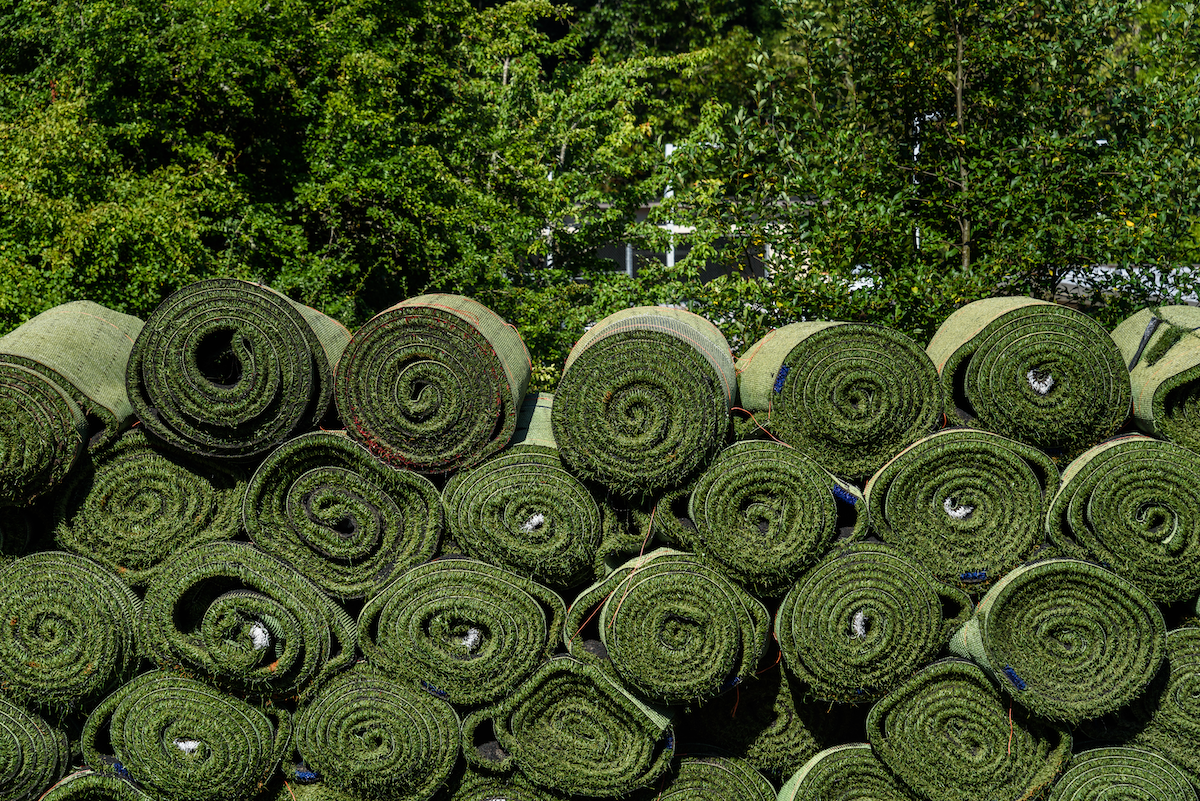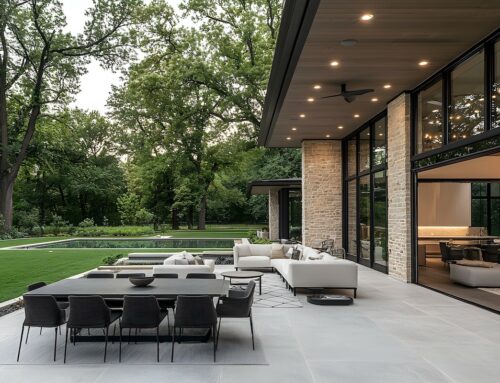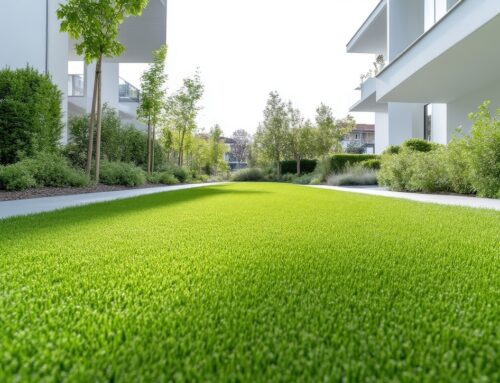Last Updated on March 7, 2024 by ReTurf
When we talk about “recycled turf,” it’s important to set the record straight from the get-go. What’s commonly bunched under the recycled category in casual conversation is more accurately described as “reused turf.” This distinction is not just semantic nitpicking; it highlights an important aspect of sustainability and environmental stewardship in the world of artificial turf. Reused turf comes from existing installations—like sports fields and stadiums—that no longer need it. Instead of heading to a landfill, this turf gets a second life in new projects and applications.
Choosing reused turf over brand new installations taps into a broader narrative of environmental and economic considerations. On one hand, it’s about reducing waste and making the most of the resources already in circulation. On the other, it’s about the practical benefits to the consumer—namely, cost savings and the unique qualities that reused turf can offer. This introductory dive aims to lay a solid foundation for understanding the relevance of reused turf. It will explore not just why it’s an option worth considering but also how it aligns with broader trends towards sustainability and efficiency in landscaping and construction projects. The goal here is to provide a clear, comprehensive overview that empowers potential buyers with the knowledge they need to make informed decisions.
Understanding Recycled Turf
Recycled turf, or as it’s more precisely known, reused turf, represents an innovative approach to sustainable landscaping and construction. Let’s delve into what makes recycled turf a noteworthy choice for various applications, from residential gardens to sports fields.
What is Recycled Turf?
Recycled turf refers to high-quality artificial grass that has been previously installed in one location, such as a sports stadium or athletic field, and is later repurposed for new installations. This process involves carefully removing the turf, cleaning it, and ensuring it meets quality standards before it’s made available for resale. The idea is to extend the lifecycle of artificial turf products, thereby minimizing waste and promoting a circular economy.
Contrary to what some might think, recycled turf is not melted down and remade into new products, which would classify it as traditionally “recycled” material. Instead, it’s “reused” in its existing form, offering an environmentally friendly alternative to brand-new artificial grass. This distinction is crucial for understanding the unique value proposition of recycled turf, which lies in its blend of sustainability, cost-effectiveness, and practicality.
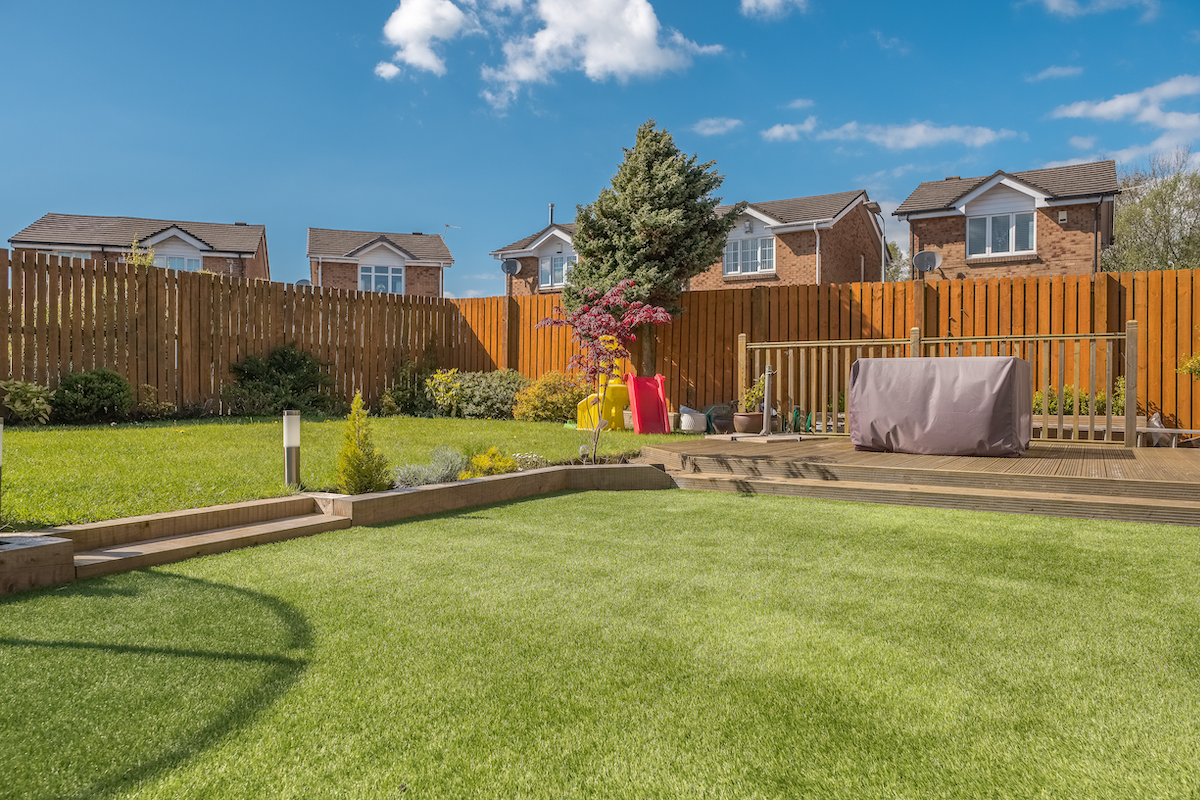
The Environmental Impact
Choosing recycled turf over new installations carries significant environmental benefits. First and foremost, it reduces waste. Every square foot of turf that’s reused is one less square foot contributing to landfill volumes. In a world increasingly conscious of waste management and sustainability, recycled turf offers a practical solution to repurpose large-scale artificial grass installations that are otherwise in good condition.
Moreover, recycled turf conserves resources. The production of new artificial turf requires materials like plastic and rubber, not to mention the energy involved in manufacturing and transportation. By opting for recycled turf, consumers directly contribute to lowering the demand for raw materials and energy consumption associated with new products.
However, it’s essential to consider any potential drawbacks. For instance, recycled turf might show signs of wear and may not be suitable for all applications. Additionally, while it drastically reduces environmental impact, the cleaning and processing of recycled turf still require resources. Yet, when balanced against the benefits, recycled turf emerges as a compelling choice for environmentally conscious consumers and projects aiming for sustainability without compromising on quality and aesthetics.
Economic Considerations
Opting for recycled turf over new installations isn’t just a win for the environment; it also makes a lot of financial sense. Let’s break down the cost benefits and the long-term value associated with choosing recycled turf, providing you with a clearer picture of the economic landscape.
Cost Benefits
When comparing the costs of new versus recycled turf, the savings can be quite significant. New artificial turf can range widely in price, depending on quality, brand, and type, but it’s not uncommon to see prices upwards of $2 to $5 per square foot. In contrast, recycled turf often comes at a fraction of that cost, sometimes as low as $0.50 to $1.50 per square foot. The variance in pricing for recycled turf is influenced by factors such as the condition of the turf, its age, and the quantity purchased.
For example, a school looking to install a new football field could face expenses in the tens of thousands for new turf, while opting for recycled turf could cut those costs significantly, allowing budget allocations for other improvements or equipment. It’s important to note, however, that while the initial cost savings are substantial, buyers should also consider the installation and any necessary refurbishment expenses that might come with recycled turf.
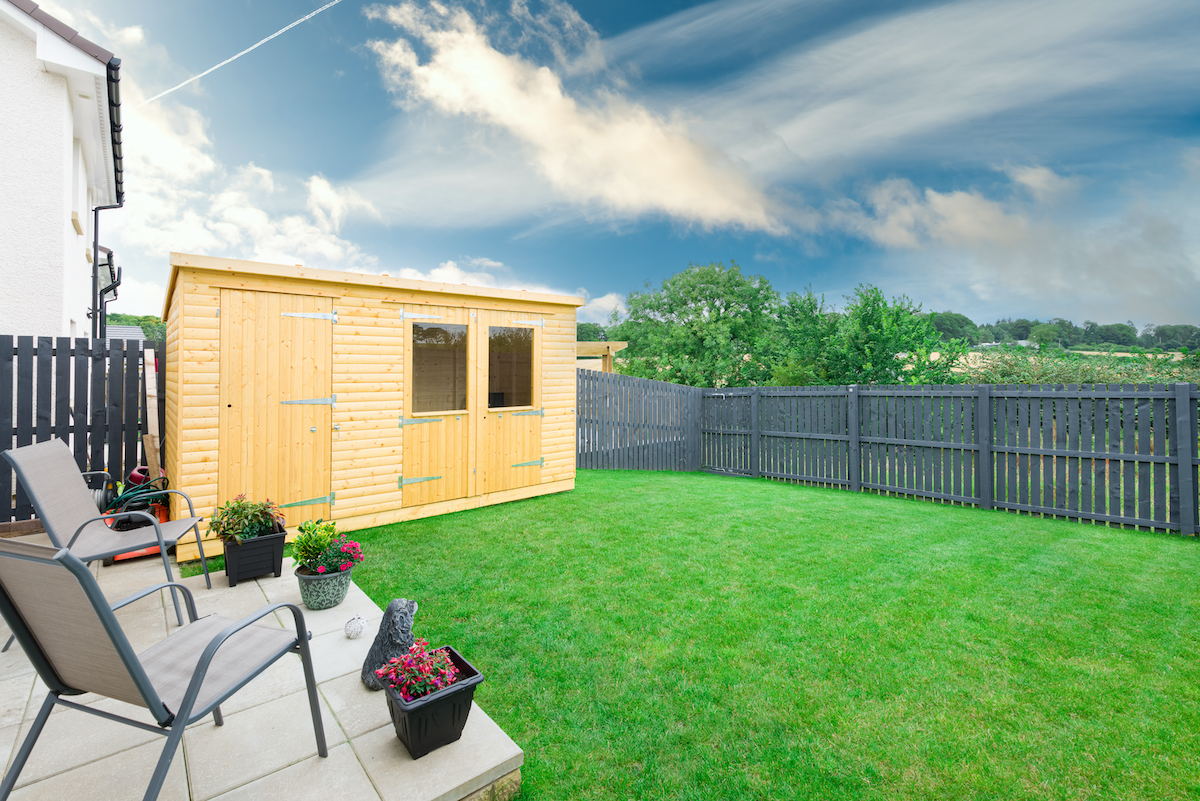
Long-Term Value
The longevity and durability of recycled turf are often points of concern for potential buyers. It’s natural to wonder if the reduced cost upfront translates to a shorter lifespan down the line. Generally, high-quality recycled turf, especially the premium grades, can offer comparable durability to new installations, particularly in light of its prior use in low-impact areas of sports fields or lightly used facilities.
Maintenance requirements for recycled turf parallel those of new installations, involving regular cleaning, brushing, and, if necessary, infill replenishment. Properly maintained, recycled turf can last many years, delivering excellent value over its lifespan. For instance, a residential lawn replaced with recycled turf could see a lush, green space for a decade or more, with minimal upkeep costs compared to natural grass or brand-new synthetic options.
Installation and Maintenance
Choosing recycled turf is a smart move, both economically and environmentally. But to truly reap the benefits, proper installation and maintenance are key. Let’s walk through the basics of getting your site ready for recycled turf and how to keep it looking great for years to come.
Preparing for Installation
Getting your site ready for recycled turf installation is crucial for ensuring longevity and optimal performance. Here’s a straightforward approach:
- Site Assessment: Begin with assessing the area where the turf will be installed. Check for drainage issues and make sure the ground is level. Addressing these issues upfront can prevent problems down the line.
- Ground Preparation: Clear the area of any debris, rocks, or vegetation. You’ll need a smooth, stable base, so depending on your site, this might involve laying down a layer of compacted gravel or sand. This layer helps with drainage and provides a solid foundation for the turf.
- Measuring and Cutting: Once your base is ready, roll out your recycled turf. Measure twice and cut once, ensuring you have the perfect fit for your space. It’s often helpful to let the turf settle for a day before final cutting and adjustments.
- Securing the Turf: Secure your turf in place using nails or staples at the edges and seams. It’s important to ensure the turf is tight and secure to prevent wrinkles or shifting.
- Infill Application: If your recycled turf requires infill, evenly spread it across the surface after installation. Infill helps keep the blades upright and adds extra cushioning.
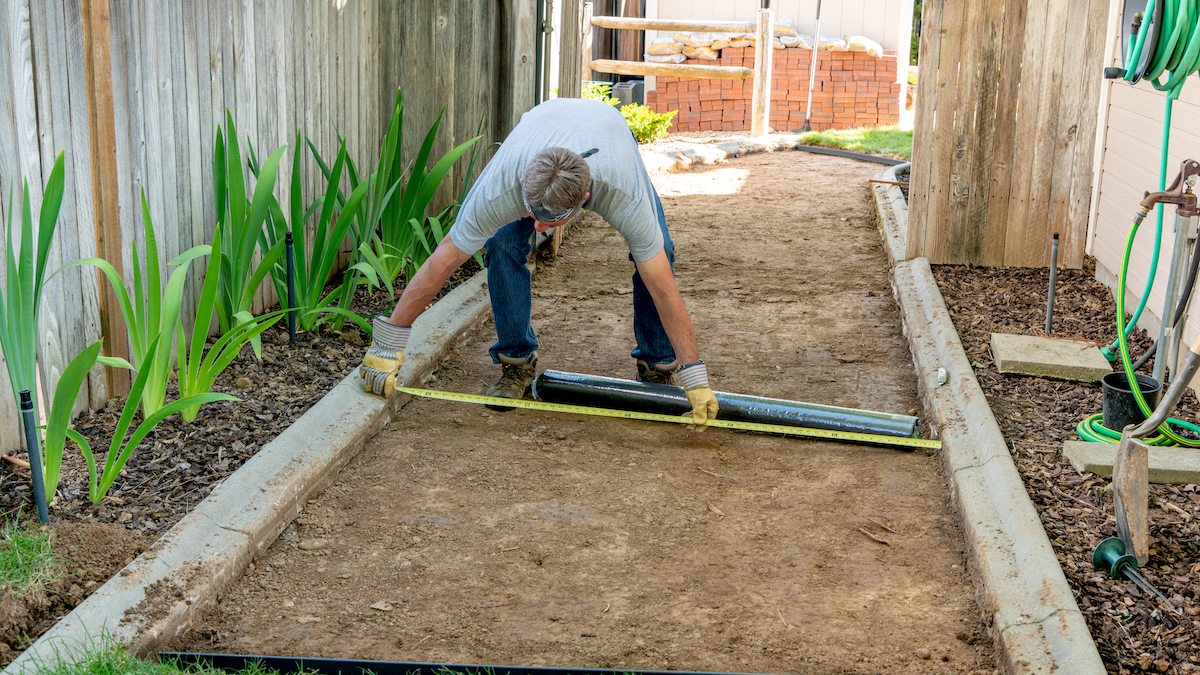
Maintenance Best Practices
Maintaining recycled turf is relatively straightforward but crucial for extending its life and maintaining its appearance.
- Regular Cleaning: Use a leaf blower or a stiff brush to remove debris and keep the turf clean. For minor stains, a simple solution of water and mild detergent should do the trick.
- Weed Prevention: Although less common than with natural grass, weeds can occasionally pop up around the edges or through drainage holes. Regular checks and prompt removal will keep them at bay.
- Fluffing the Blades: Over time, the blades of your turf might flatten. Use a brush with synthetic bristles to gently fluff the turf, keeping it looking fresh and natural.
- Professional Checks: Consider having a professional check your turf every couple of years, especially if you notice any issues with drainage or the turf’s integrity. They can address minor issues before they become major problems.
By following these installation and maintenance guidelines, you’ll ensure that your recycled turf remains a vibrant, durable, and environmentally friendly addition to your space.
Potential Drawbacks and Considerations
While recycled turf offers many benefits, it’s only fair to consider potential downsides. Understanding these can help ensure you make an informed decision that aligns with your specific needs and expectations.
One of the main considerations is the limited selection. Unlike new turf, which can be custom ordered to specific lengths, colors, and pile heights, recycled turf is subject to availability. This means you might not find the exact match for your project, which could be a deciding factor for some.
Wear and tear is another aspect to keep in mind. Recycled turf has been previously used, so it might show signs of wear. However, reputable suppliers grade their turf, offering options from basic to premium quality. While premium grades often look nearly new, even basic grades are generally in good condition, albeit with more visible signs of use.
Health and safety concerns have also been raised regarding recycled turf, particularly about the materials used in the original product and any potential exposure to chemicals or heavy metals. It’s important to source recycled turf from reputable suppliers who test their products for safety and comply with environmental regulations.
Awareness of these considerations is crucial, but they don’t necessarily overshadow the benefits of recycled turf. By carefully selecting your supplier and product, you can mitigate many of these drawbacks and enjoy the many advantages that recycled turf has to offer.

Making the Decision
When you’re at the crossroads of deciding whether recycled turf is the right choice for your project, several considerations come into play. This isn’t just about picking a product off the shelf; it’s about making an informed choice that aligns with your specific needs, values, and circumstances.
Firstly, think about the intended use of the turf. The demands on turf for a high-traffic sports area differ vastly from those for a residential lawn or decorative installation. The durability and appearance requirements will guide your selection, ensuring the turf can withstand the intended use.
Budget considerations also play a critical role. Recycled turf presents a cost-effective alternative, but it’s essential to factor in all costs, including installation and long-term maintenance. Although upfront savings are significant, ensuring the choice aligns with your financial constraints is crucial for long-term satisfaction.
Lastly, reflect on the environmental impact of your choice. Opting for recycled turf is a step towards sustainability, reducing waste and the use of new materials. If minimizing your environmental footprint is a priority, recycled turf offers a compelling argument with its reuse and conservation benefits.
When searching for a supplier, reliability and quality are paramount. ReTURF not only provides high-quality recycled turf but also supports customers through their decision-making process. They offer a wealth of experience and advice, ensuring you find the right turf for your project’s needs. With a commitment to sustainability, choosing ReTURF aligns with eco-friendly practices, offering peace of mind alongside the practical benefits of recycled turf.

